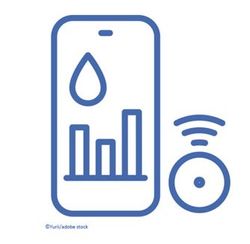Proactive Intervention: Strategies for Slowing Type 1 Diabetes Progression - Episode 7
Facilities for Teplizumab Infusion
Panelists discuss how teplizumab infusion requires specialized medical facilities equipped to manage intravenous therapy, monitor for potential adverse effects, and provide appropriate care during treatment to ensure patient safety and efficacy.
The following Frontline Insights transcript has been edited for clarity and length.
Javier Morales, MD: Let’s start with a question for the audience: How familiar are you with teplizumab, a potential intervention for delaying the onset of stage 3 type 1 diabetes? Are you very familiar, somewhat familiar, or not familiar at all? While we wait for responses, Abha, can you share how this concept of teplizumab came about?
Abha Choudhary, MD: Screening for type 1 diabetes has become increasingly relevant because we can now slow disease progression. Teplizumab, also known as Tzield, represents a pivotal milestone. It’s the first FDA-approved disease-modifying therapy for stage 2 type 1 diabetes, approved in November 2022.
Morales: That’s revolutionary. Since this therapy is approved for stage 2, could it eventually be used for stage 1 patients?
Choudhary: Not at this time, though studies are ongoing, including the PETITE study, which is investigating its use in children under age 8.
Morales: How does teplizumab work?
Choudhary: Teplizumab is an anti-CD3 monoclonal antibody that binds to T-cells. By modulating the immune response, it increases regulatory T-cells and modifies effector T-cells, ultimately calming the immune system. This delays the decline in beta cell function, which is central to the autoimmune process in type 1 diabetes.
The study that led to FDA approval, TrialNet10, was a multi-center, double-blind, randomized trial involving relatives of patients with type 1 diabetes in stage 2. Stage 2 is defined by the presence of two or more islet autoantibodies with evidence of dysglycemia.
Participants (n=76) were randomized to receive a 14-day outpatient course of teplizumab (n=44) or placebo (n=32). The primary outcome showed a significant delay in progression to stage 3 type 1 diabetes. The median time to diagnosis in the teplizumab group was 48.4 months versus 24.4 months in the placebo group. This two-year delay means fewer insulin injections, blood sugar checks, and immediate diabetes-related concerns, marking a significant breakthrough in diabetes care.
In both clinical and research settings, adverse effects have been generally manageable. Lymphopenia, a transient drop in lymphocyte count, typically peaks at about day 5 of infusion and resolves on its own over a few weeks. Rash is also common, but self-limiting. There can sometimes be liver enzyme abnormalities and that's why we monitor closely during the infusion period. Cytokine release syndrome (CRS), is rare, sen in fewer than 10% of patients. It presents as flu-like symptoms, joint pain, or muscle aches.
In our clinic, to minimize adverse effects, our Tzield protocol includes pre-medication with antipyretics, antiemetics, and antihistamines for the first five infusions as well as normal saline boluses during the initial infusion period. It's important to remember that CRS can occur for up to 28 days post-infusion so patients should be monitored and advised on symptomatic management as needed.
In severe CRS cases, steroids or epinephrine are backups, though we’ve fortunately not needed to use them.
Morales: It’s reassuring to know you have robust protocols in place. The management of potential adverse events like CRS is critical for broader adoption of teplizumab.


